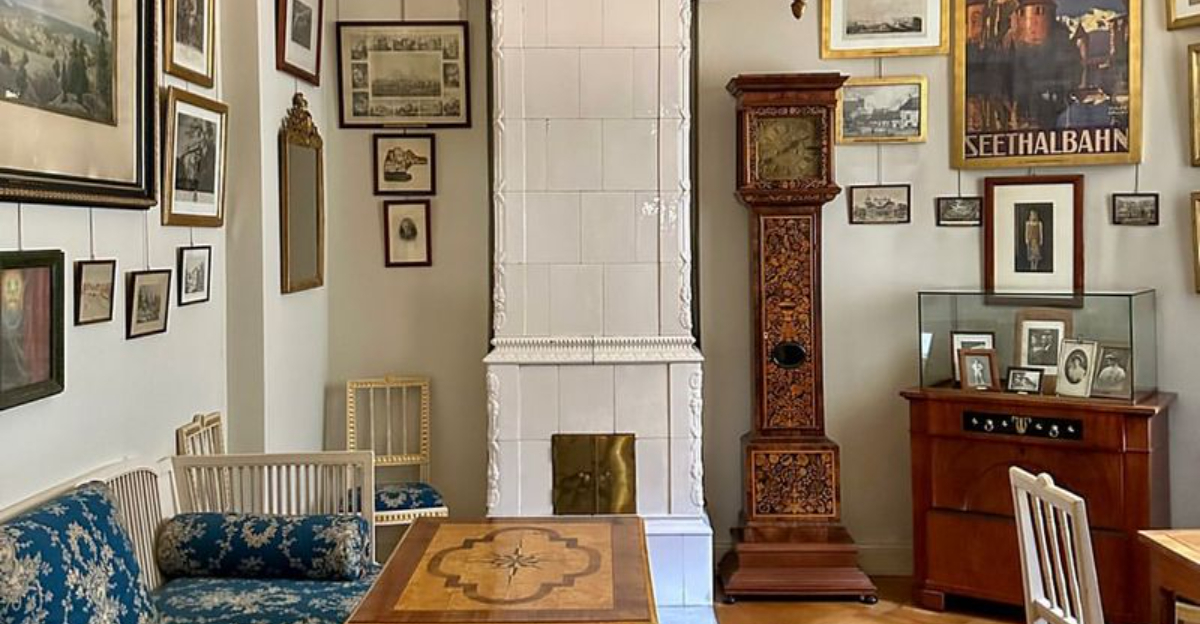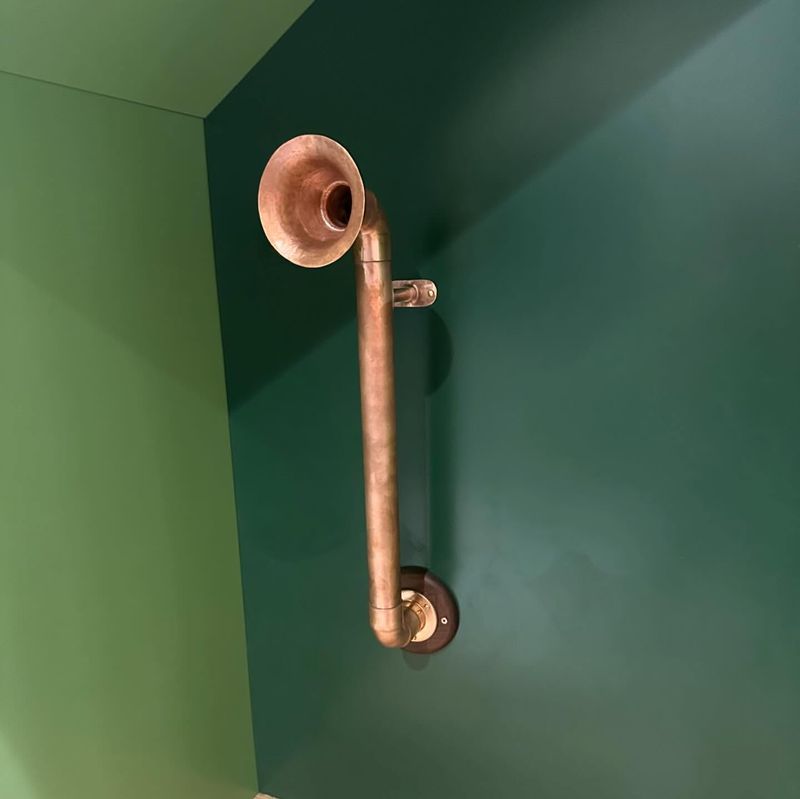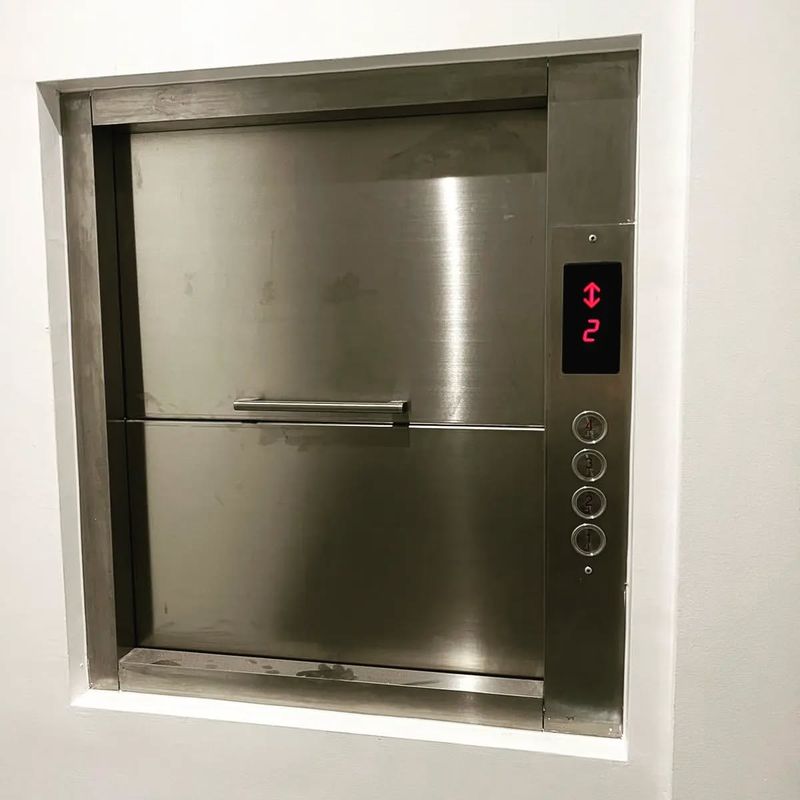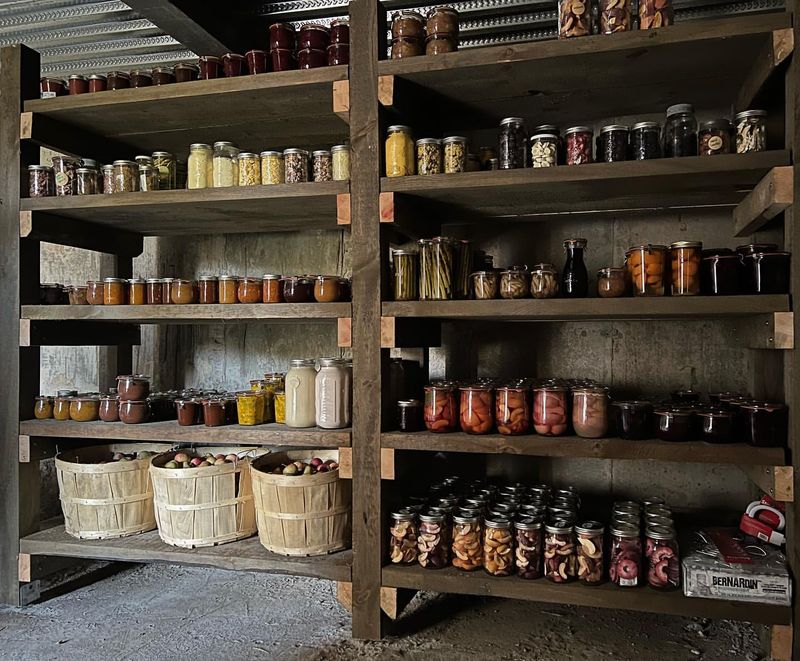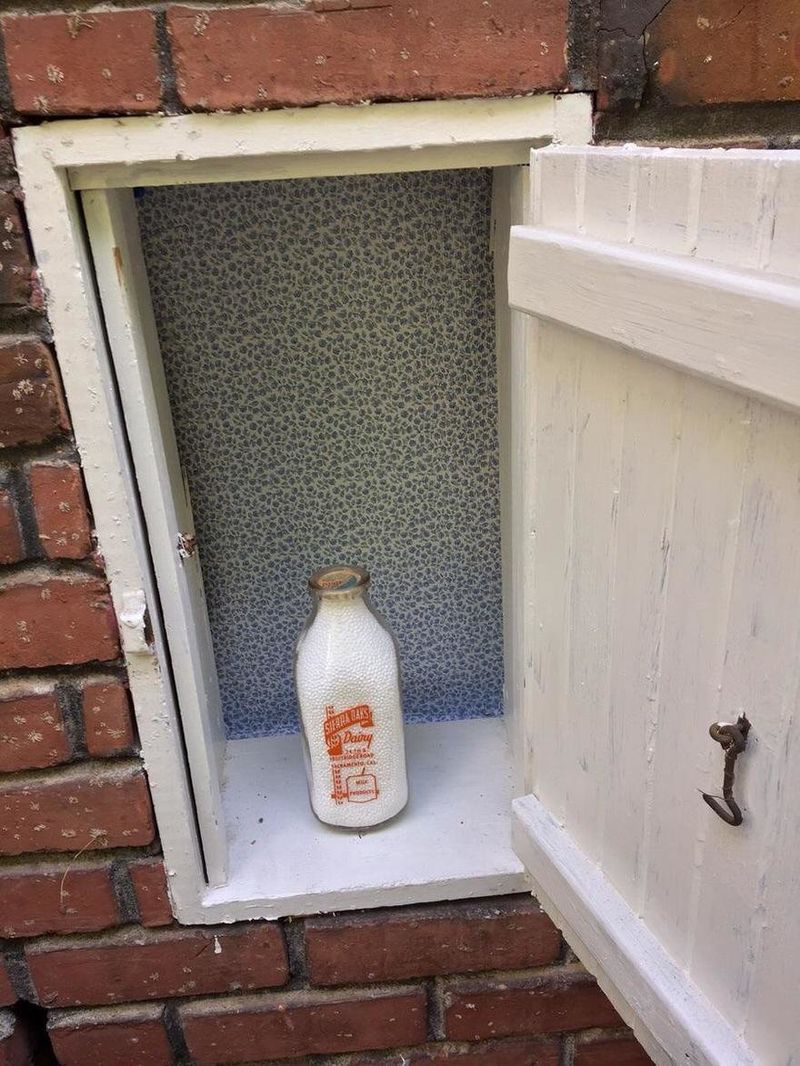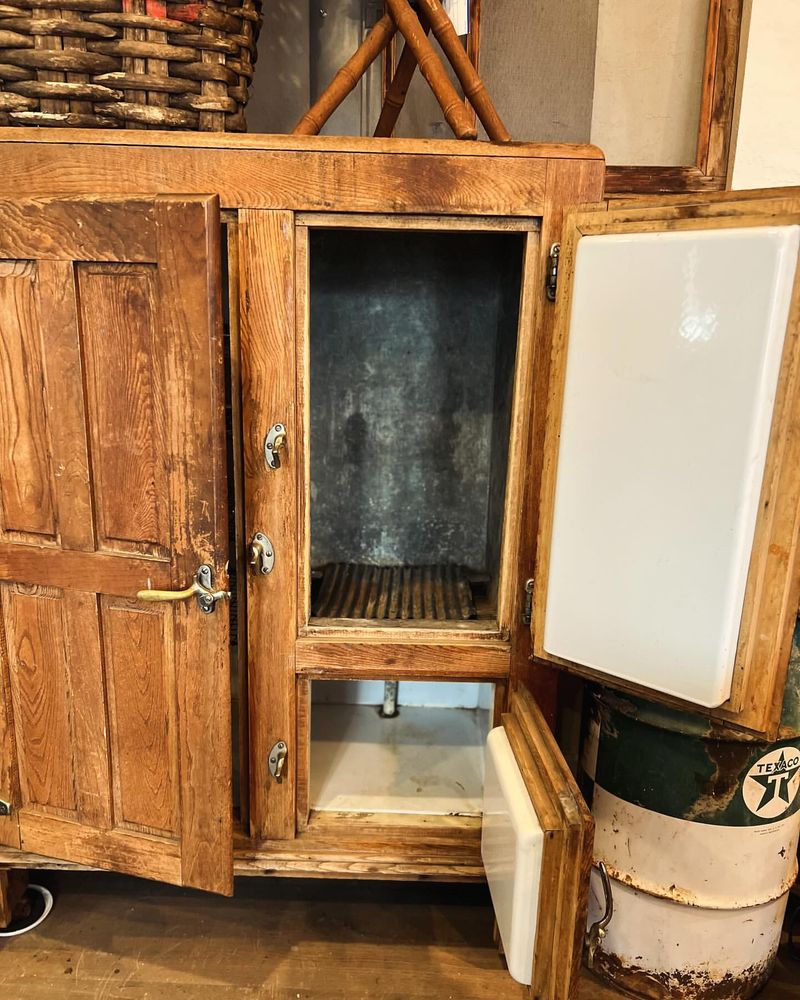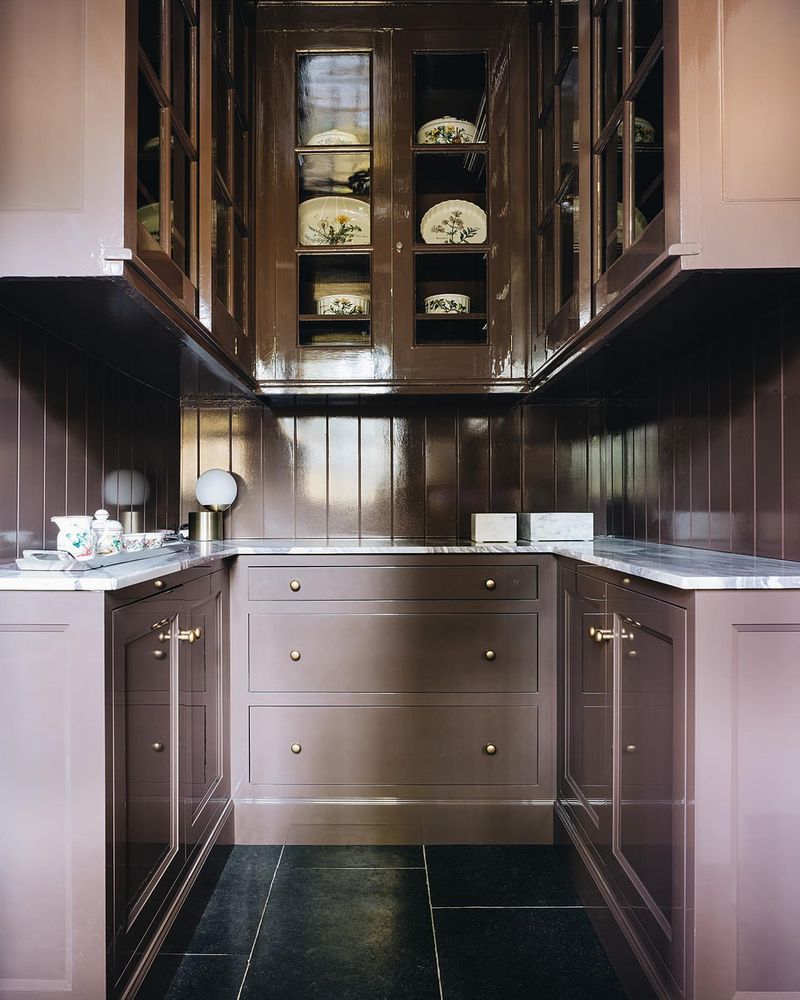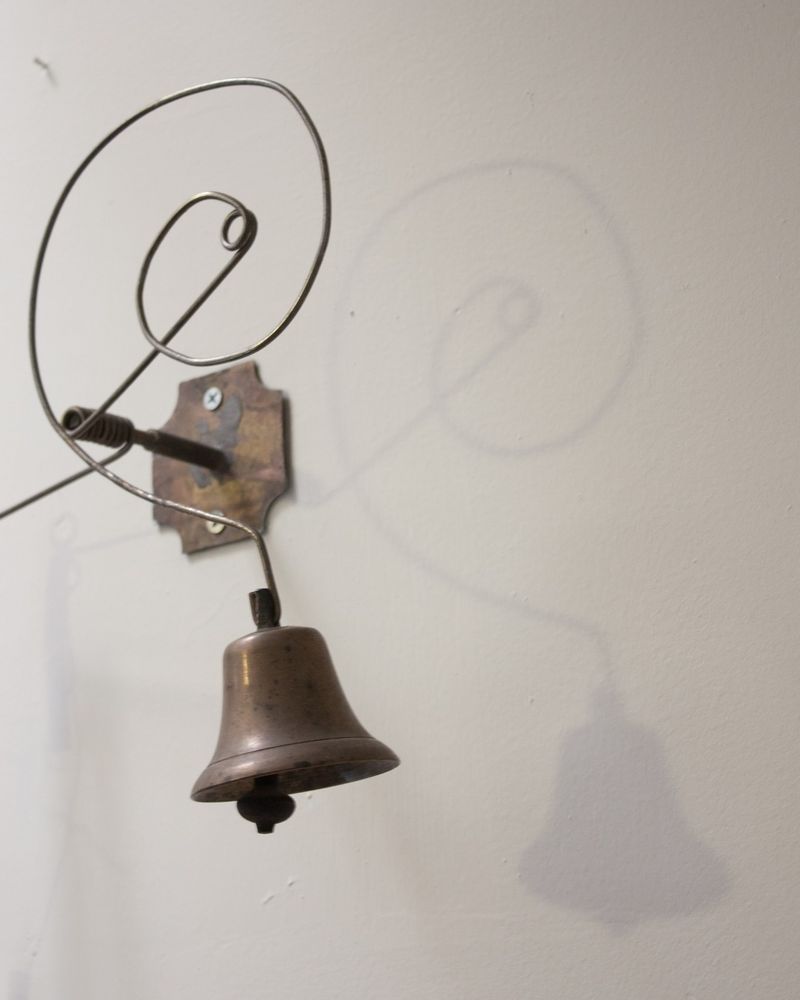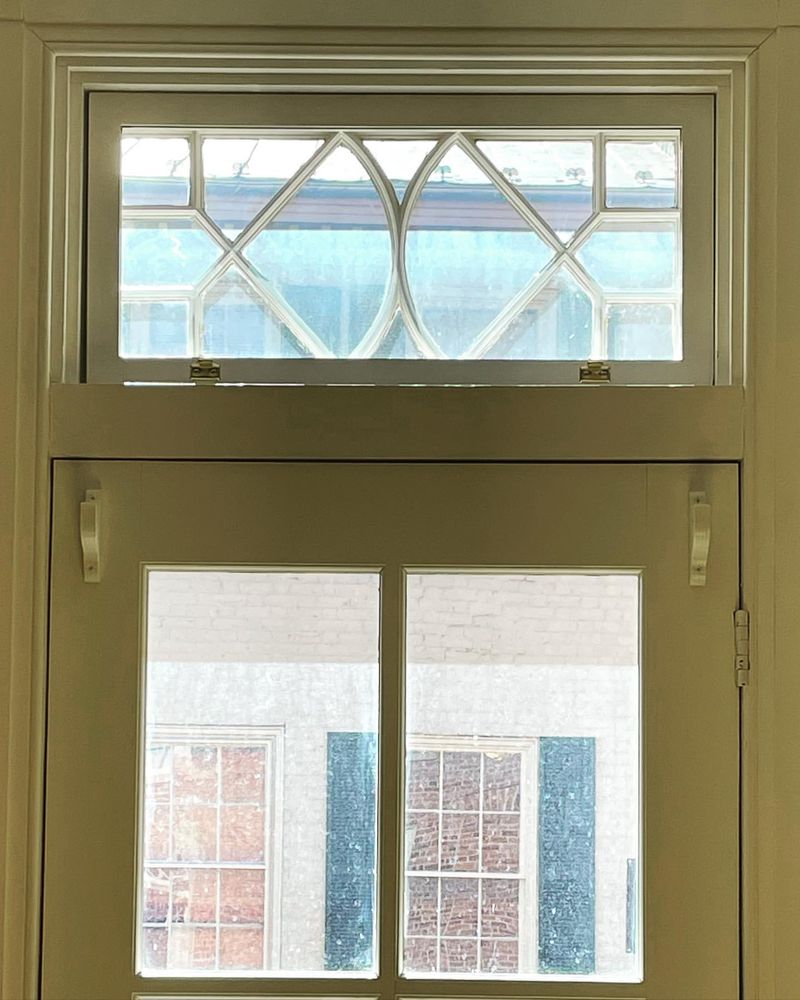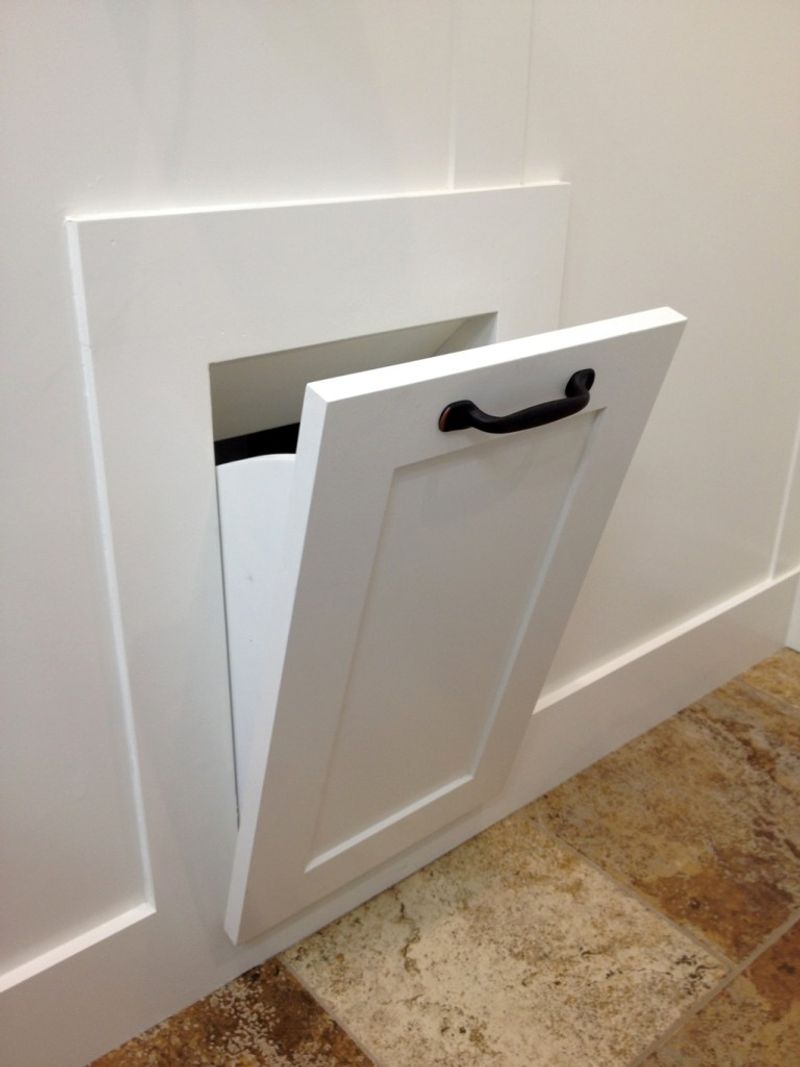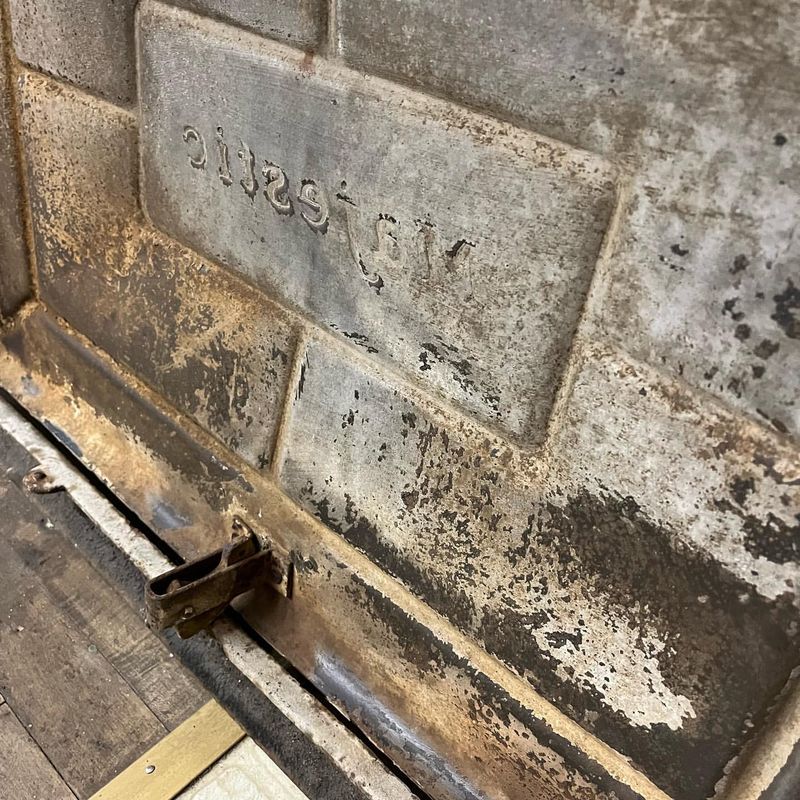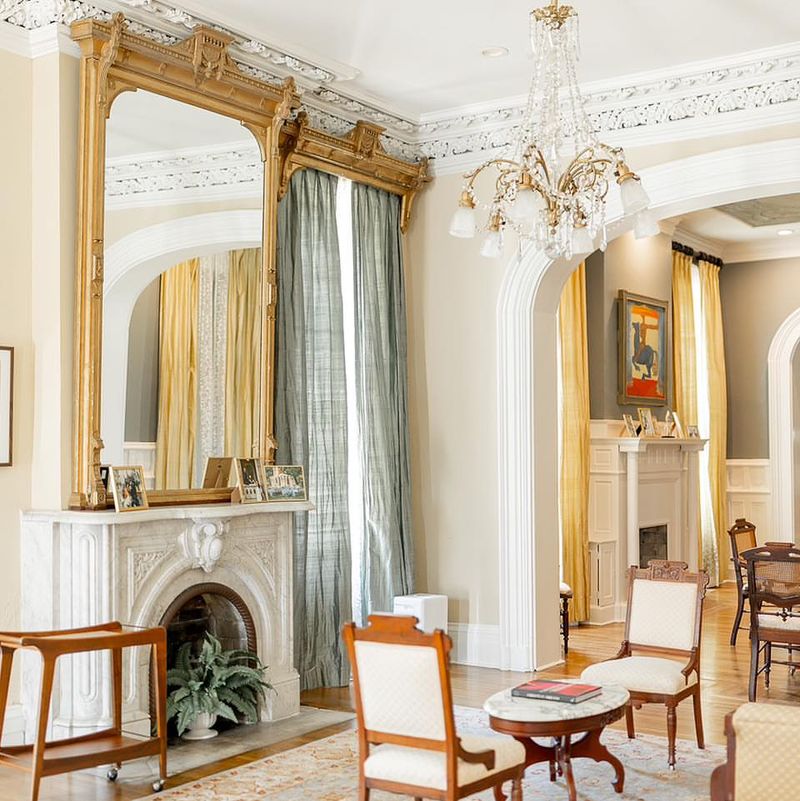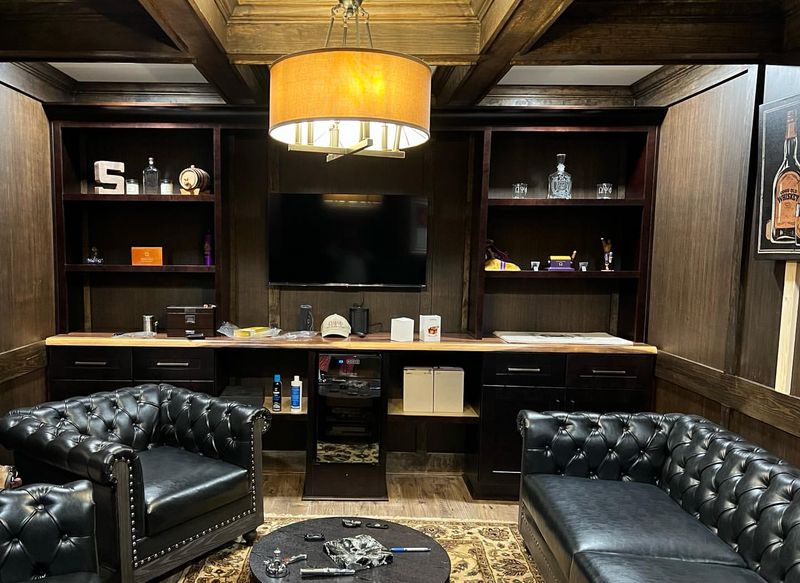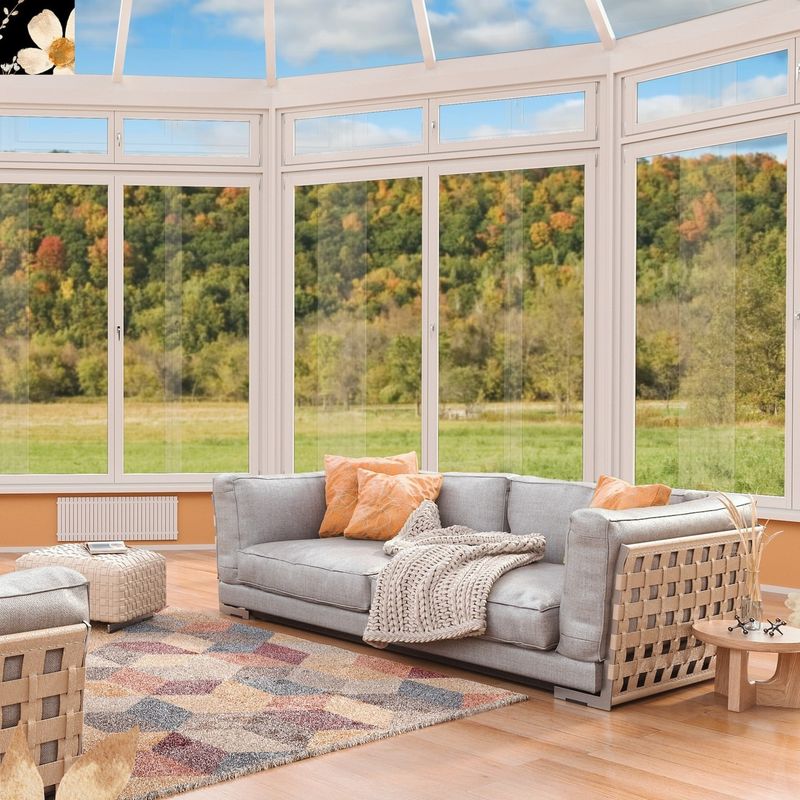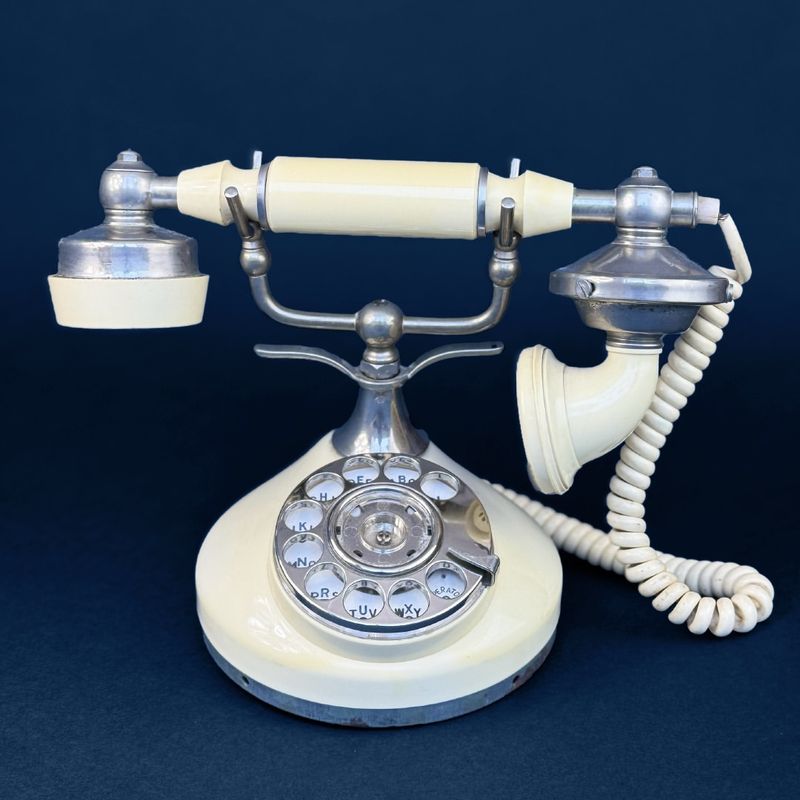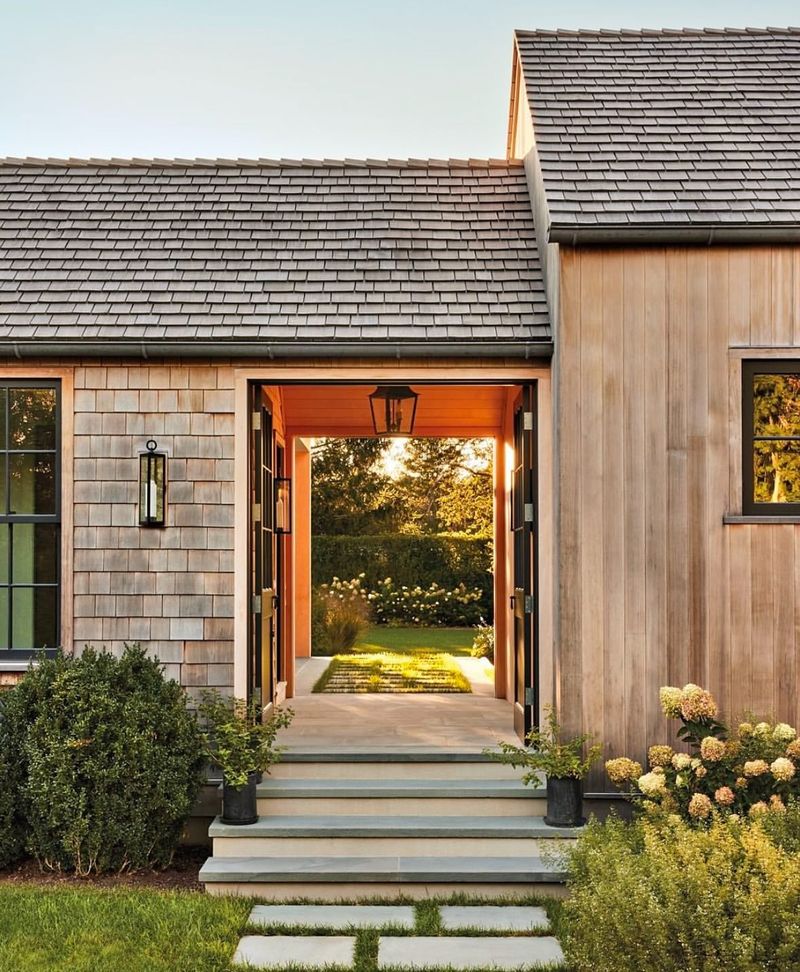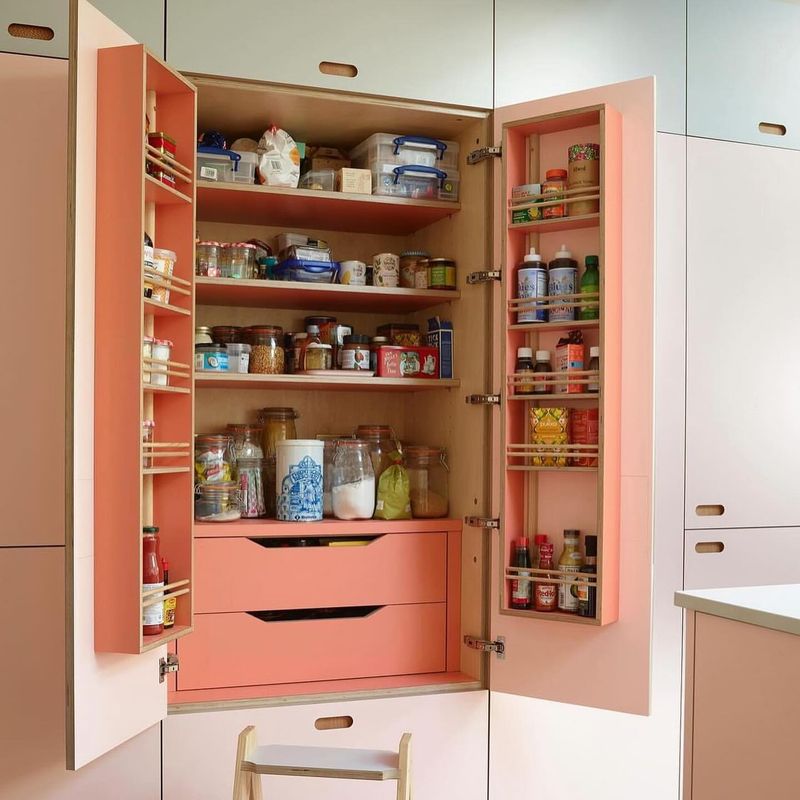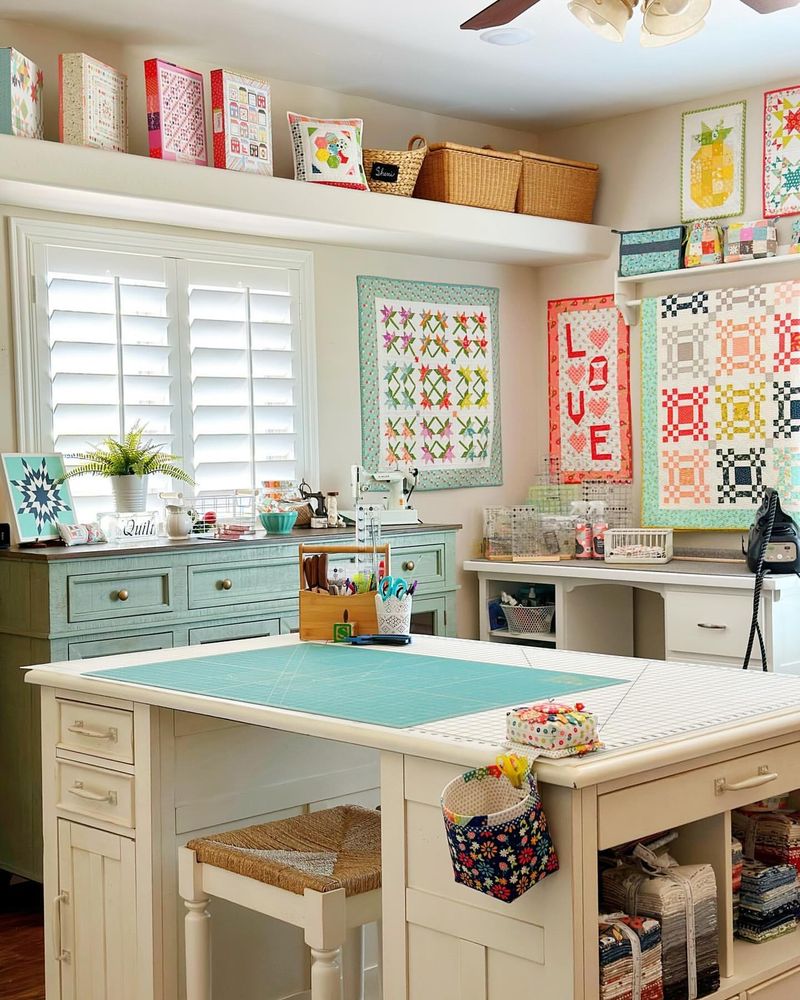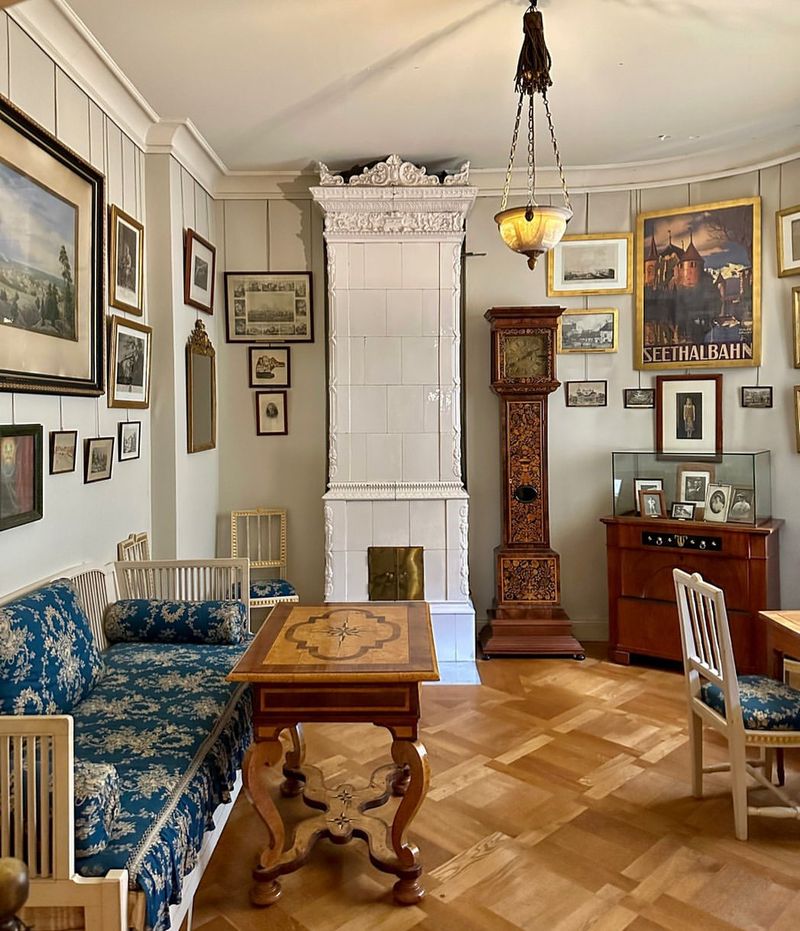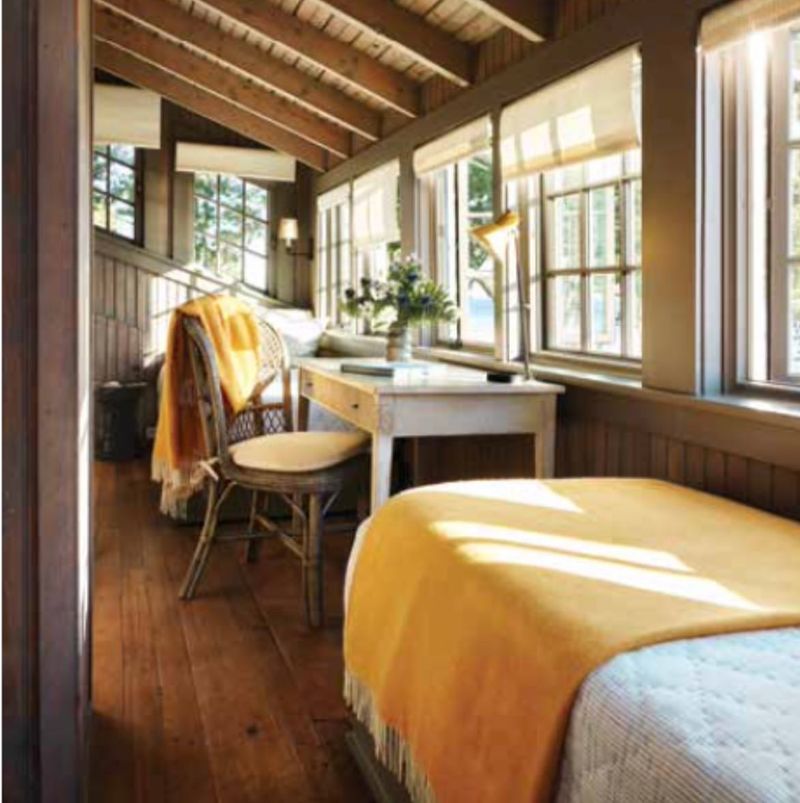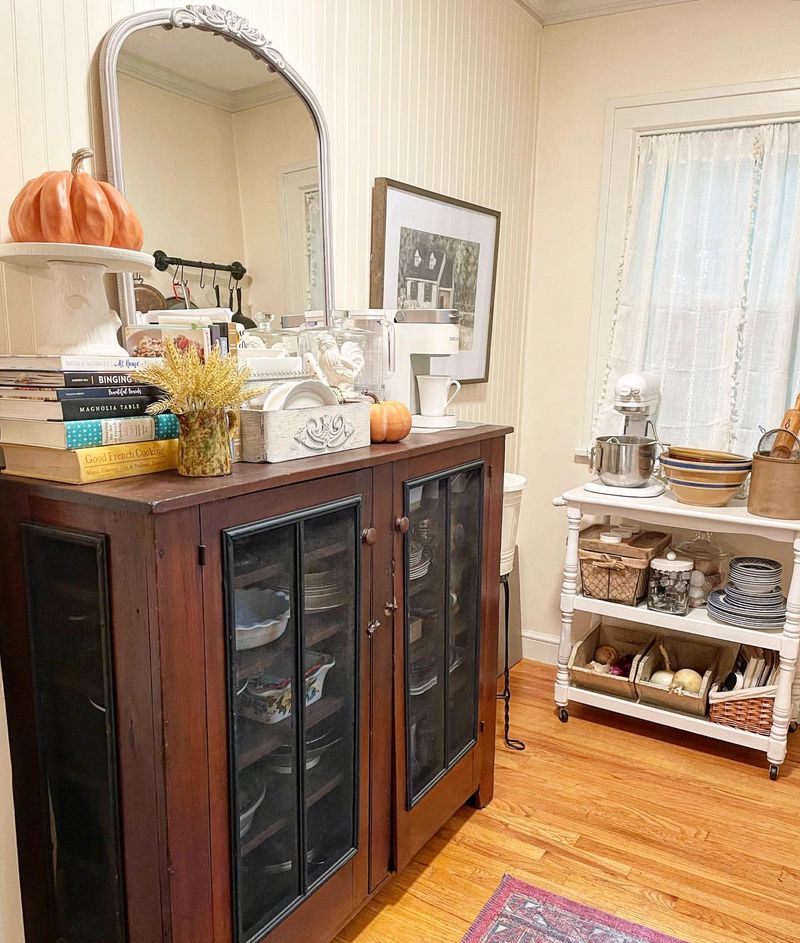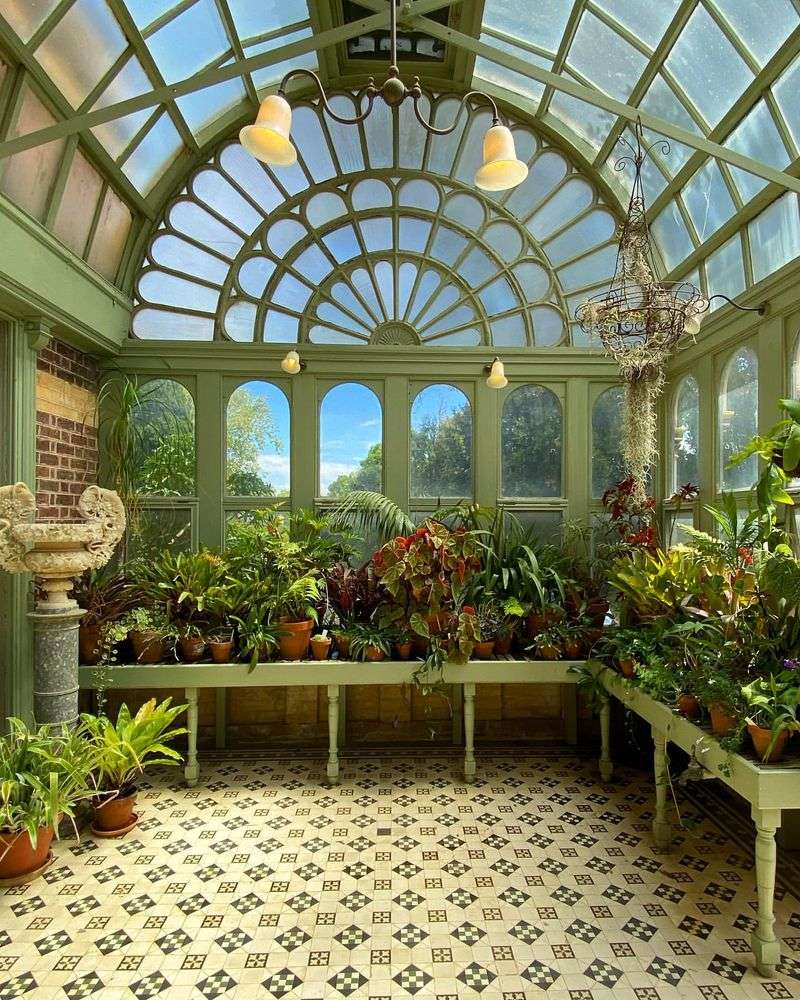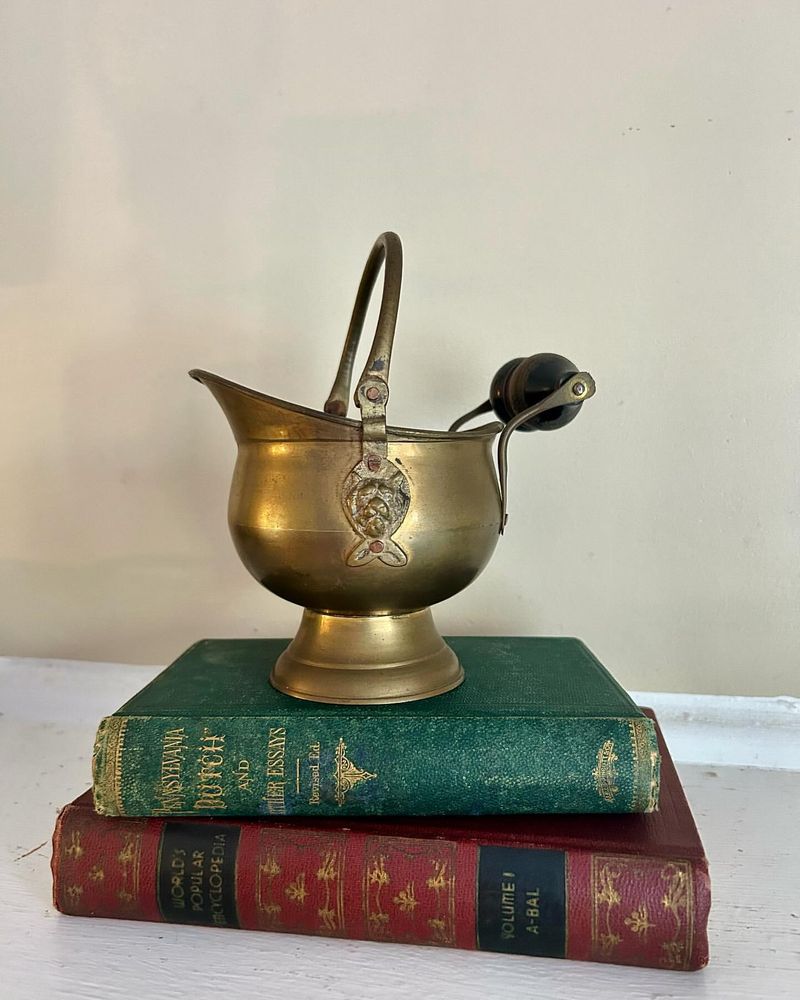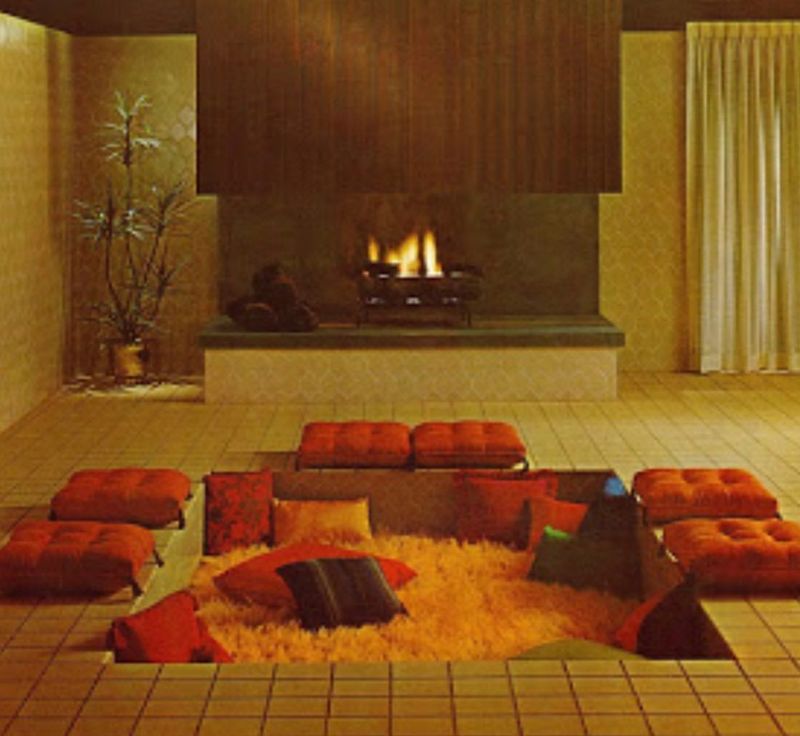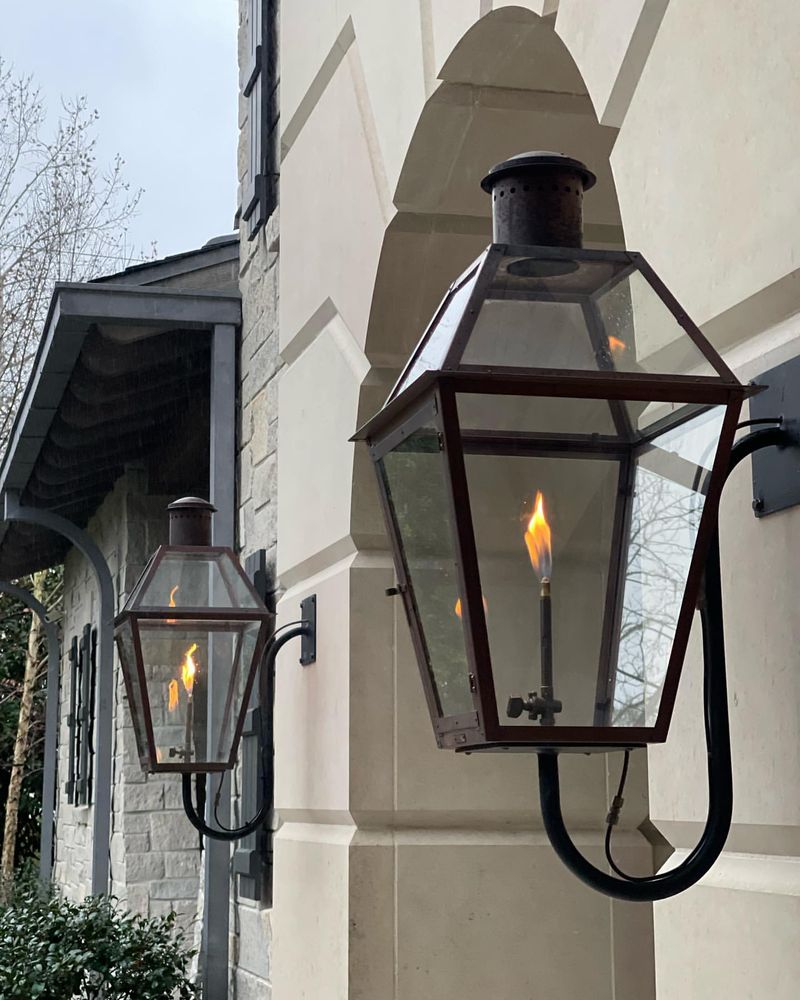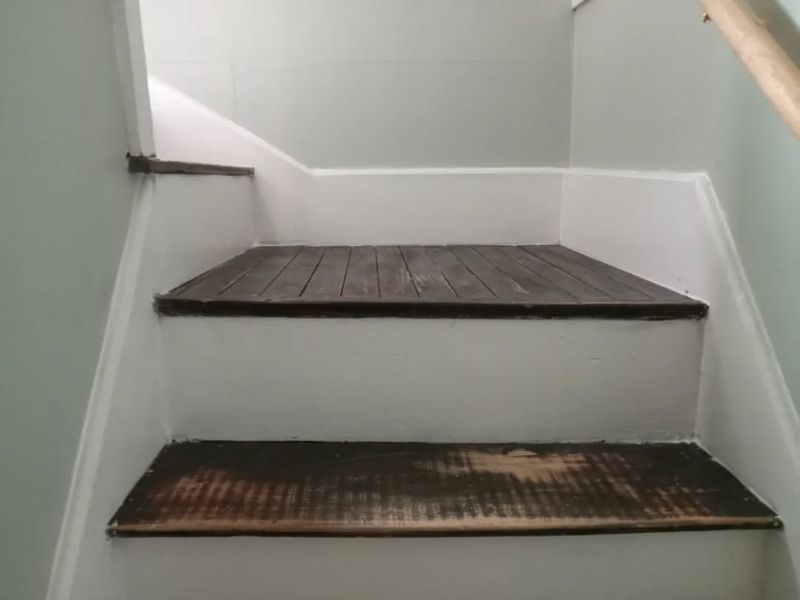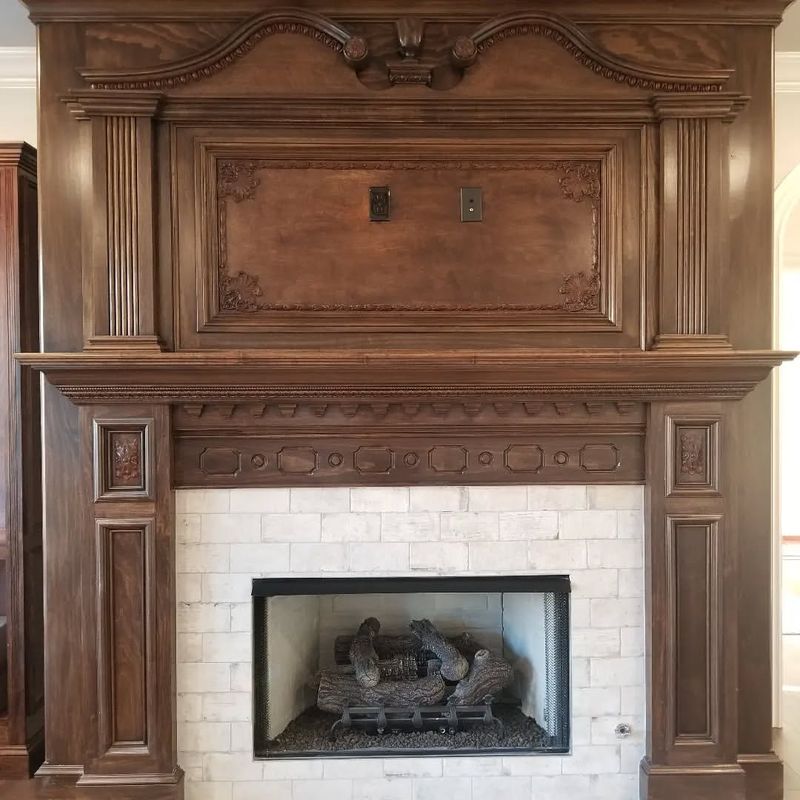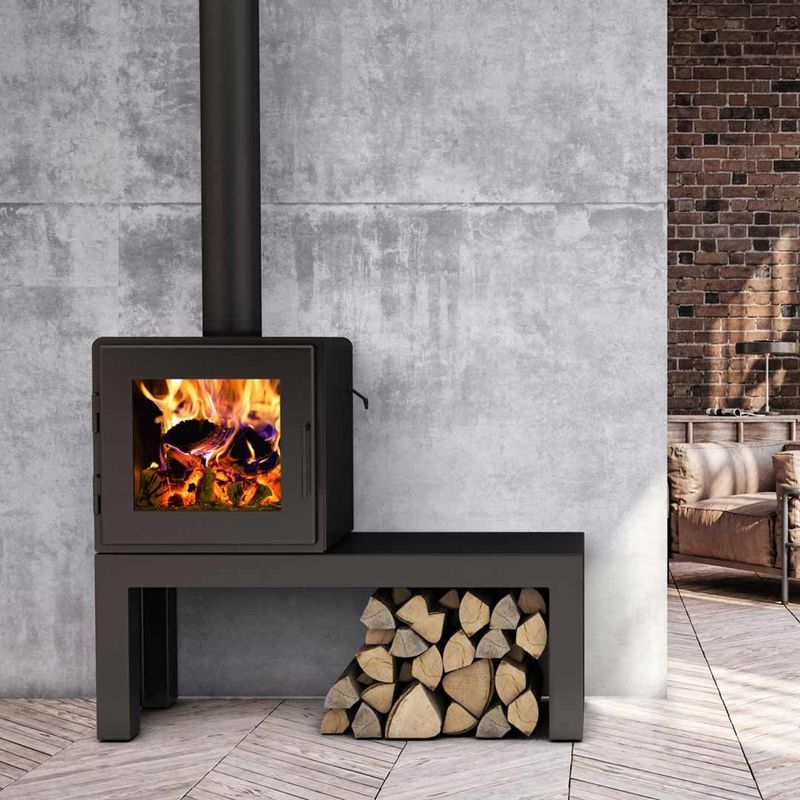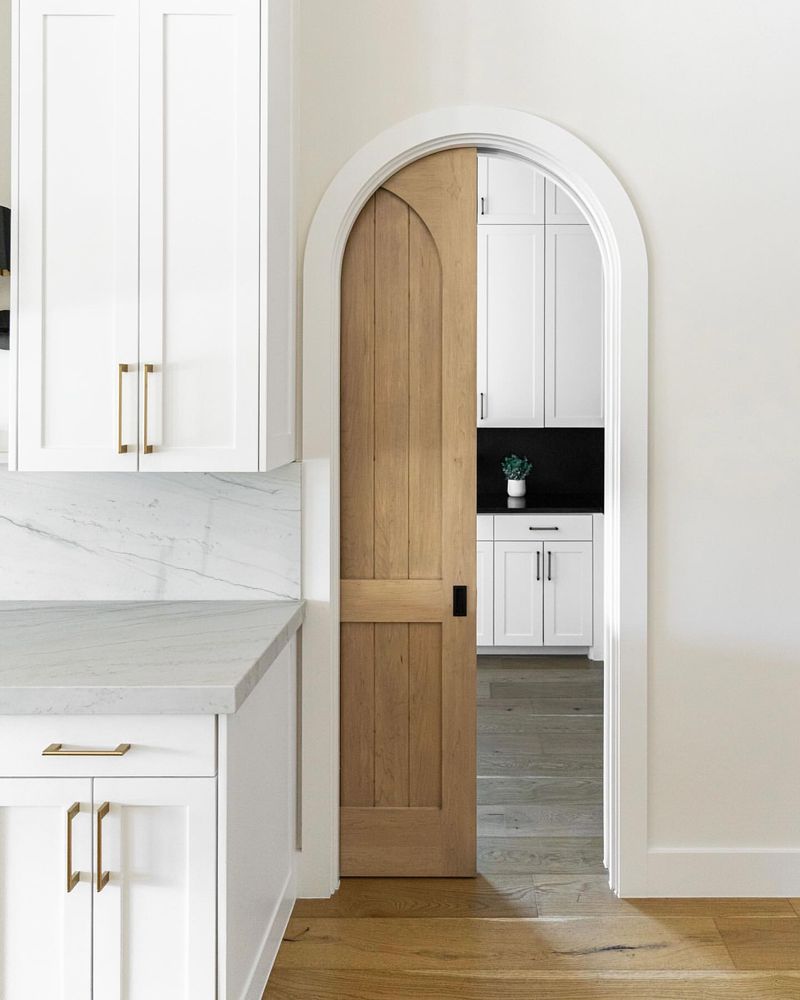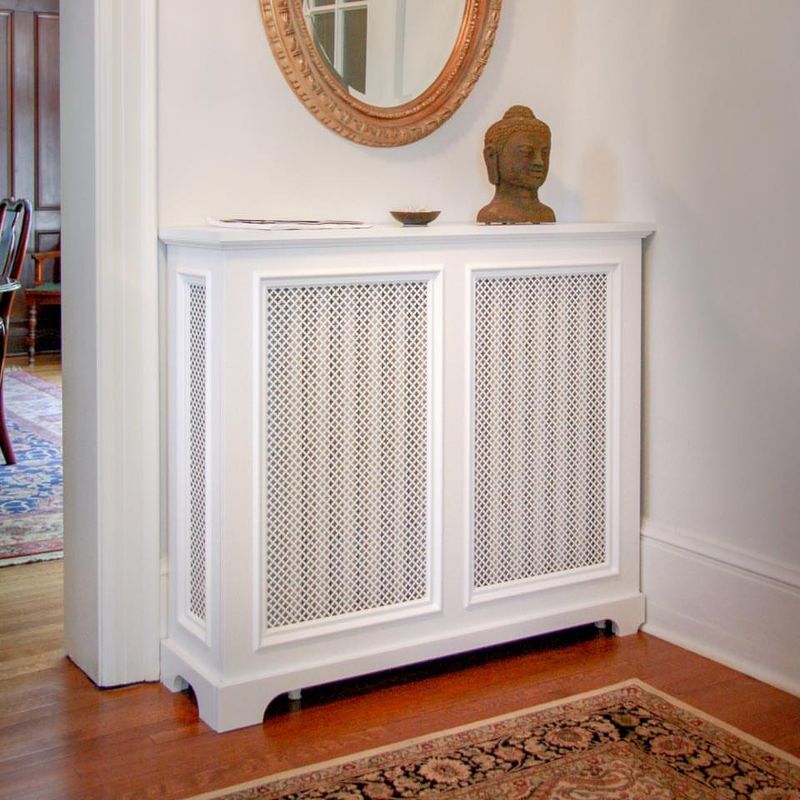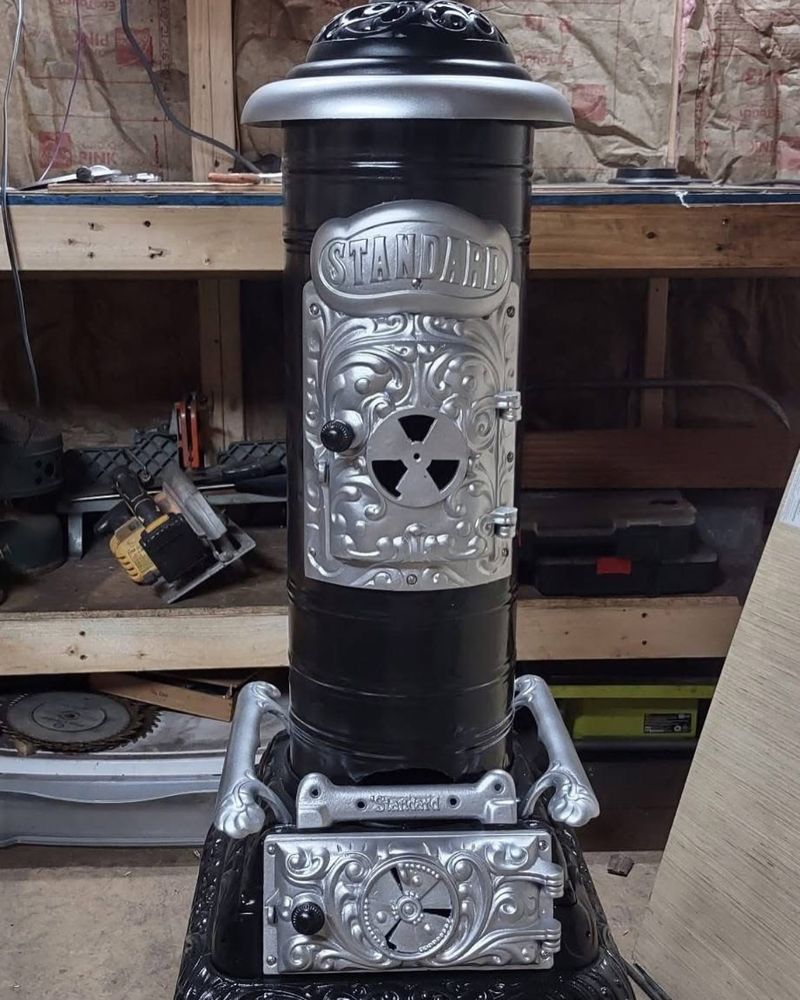Let’s take a whimsical journey through the corridors of time, where homes had personality quirks as unique as the people who inhabited them.
These features, now mostly relegated to the dusty archives of history, once graced households with charm and functionality.
From secret passages to speaking tubes, each of these 30 items reflect a bygone era’s creativity and priorities. Prepare to be amused and perhaps inspired to incorporate some old-world flair into modern living!
1. Speaking Tubes
Imagine a world before cell phones – a time when communicating across rooms meant yelling or, more elegantly, using speaking tubes. These ingenious devices allowed family members to converse from the attic to the basement without raising their voices.
They were not just functional but added a touch of steampunk charm to any household. The tubes, often crafted from brass, would snake through the walls, and their ornate mouthpieces became decorative features in their own right. A whisper of the past, now largely forgotten.
2. Dumbwaiters
Before the era of instant messaging and intercom systems, the dumbwaiter was the household’s silent helper. This mini-elevator transported food, laundry, or anything small enough, between floors.
Not just a labor-saving device, it was a necessity in multi-storied homes, particularly those with kitchens in the basement.
These discreet cabinets often blended seamlessly with the home’s decor, offering a glimpse into the ingenuity of past domestic life. Nowadays, they are a rarity, often mistaken for quaint cupboards.
3. Root Cellars
In a time before refrigerators, root cellars were the go-to solution for keeping food fresh. These subterranean storage rooms used the earth’s natural cooling properties to preserve fruits and vegetables.
Often built into hillsides or under homes, they were essential for winter survival. As modern conveniences took over, the root cellar quietly faded into obscurity, a relic of resourcefulness. While they may have lost their place in most backyards, their eco-friendly design remains a testament to sustainable living.
4. Milk Doors
Once upon a time, milk didn’t come from the supermarket but was delivered fresh to your home. Milk doors, small and discreet, facilitated this daily ritual. Situated on the side of houses, they allowed milkmen to deposit bottles without disturbing the household.
These little portals now stand as charming reminders of a bygone era, when the clink of glass bottle delivery was a familiar morning sound. Though milk doors have vanished, their quaintness still echoes in nostalgic stories.
5. Iceboxes
Before the reign of electric refrigerators, there were iceboxes. These wooden cabinets, lined with tin or zinc, kept perishables cool with blocks of ice delivered by the iceman.
While they required regular replenishment, iceboxes were indispensable in the kitchen’s arsenal. As refrigeration technology advanced, they became obsolete, yet their sturdy craftsmanship and practicality still captivate antique enthusiasts today.
Iceboxes serve as a reminder of an era when keeping food fresh was a daily challenge.
6. Butler’s Pantries
In an age of grand dinners and high society, the butler’s pantry was an essential fixture. These small rooms stored the family’s finest china, silver, and linens, often with a sink for discreet cleaning.
The butler, or head servant, orchestrated meals from this hidden hub, ensuring everything ran smoothly. Although less common now, the butler’s pantry represents a time when hosting was an art form. Today, they inspire luxurious kitchen designs, merging function with a touch of aristocratic flair.
7. Servant Bells
Imagine ringing a bell to summon assistance – a concept foreign in today’s DIY world. Servant bell systems, once standard in affluent homes, allowed residents to call for help from any room.
These intricate networks of wires and pulleys connected rooms to the servant quarters, where a bell’s jingle indicated a need. This system, although obsolete, represents the social dynamics of its time. The bells may no longer ring, but they echo tales of service and hierarchy.
8. Transom Windows
Transom windows, those charming little panes above doors, were more than just decorative. They allowed light and air to circulate in homes long before electric lighting and HVAC systems.
Their ability to pivot open imbued spaces with fresh air, maintaining comfort in the pre-air-conditioning days. Though they’ve fallen out of common use, transom windows still grace some historic homes, a nod to a time when architecture prioritized both beauty and practicality.
9. Laundry Chutes
Once a staple in multi-story homes, the laundry chute was a simple yet ingenious solution for transporting laundry. This gravity-powered marvel allowed dirty clothes to travel from upper floors directly to the laundry room.
No more lugging baskets down stairs—just toss and forget. While modern laundry practices have evolved, the convenience of a chute remains unmatched, and the concept occasionally resurfaces in contemporary home designs, a sweet nod to efficient living.
10. Coal Chutes
Back in the days when coal fueled the home fires, coal chutes were a practical necessity. These small openings allowed coal deliveries directly into the basement from the street, minimizing mess.
They served as a gritty reminder of an era reliant on manual labor for heating. While central heating systems have replaced them, coal chutes still evoke the industrial past, a relic of the urban landscape that powered homes through many a cold winter.
11. Parlor Rooms
Parlor rooms were the social hubs of their time, where guests were entertained and important matters discussed. These formal spaces showcased the home’s best decor and often featured ornate furnishings and family heirlooms.
In today’s casual living environments, the parlor has lost its prominence, giving way to open-plan designs. Yet, the parlor room remains a symbol of elegance and hospitality, a cozy reminder of a time when social gatherings were an art form.
12. Smoking Rooms
In an age when smoking was synonymous with sophistication, the smoking room was a home staple. These designated spaces allowed gentlemen to enjoy cigars and conversation away from the main living areas.
Outfitted with plush armchairs and ample ashtrays, they were the epitome of leisure. As smoking habits declined, so did these rooms, leaving behind an air of nostalgia and a whiff of tobacco in their wake.
13. Sunrooms
Sunrooms, or solariums, were the perfect blend of indoor comfort and outdoor freedom. These glass-enclosed spaces allowed sunlight to pour in while shielding occupants from the elements.
A favorite for plant lovers and readers alike, they offered a serene refuge. Though modern homes might favor decks and patios, the sunroom’s tranquil charm continues to inspire, a testament to the simple joy of basking in sunlight year-round.
14. Rotary Telephones
Remember the days when making a call was a tactile experience? Rotary telephones, with their spinning dials, were once the standard in households across the globe. Each number you dialed was a deliberate action, with the dial returning to its original position with a satisfying click.
The heavy handset, coiled cord, and distinct ring all contributed to their timeless charm. Despite their obsolescence in today’s smartphone era, they remain a nostalgic symbol of simpler times.
15. Breezeways
Breezeways, those delightful covered passages connecting parts of a home, offered more than just a protected walkway. Designed to maximize airflow, they kept homes cool in warmer climates.
These architectural features also provided a unique space for relaxation and socializing, especially on balmy evenings. Although less common now, the breezeway’s charm and functionality continue to inspire designs that bridge indoor and outdoor living.
16. Larders
In the days before supermarkets, larders were the heart of home food storage. These cool, ventilated rooms housed everything from cured meats to preserves, a precursor to the modern pantry.
Essential for managing household provisions, larders were meticulously organized spaces. While modern refrigeration has rendered them largely obsolete, the larder embodies a tradition of self-sufficiency and culinary pride, inspiring food enthusiasts to revisit old preservation techniques.
17. Sewing Rooms
Once a common feature, the sewing room was where creativity met necessity. These dedicated spaces allowed for mending, designing, and creating clothes and household items by hand.
In an era of fast fashion, the sewing room has become a rare sight, yet it represents a time of personal craftsmanship and creative expression. Today’s DIY enthusiasts often recreate this space, appreciating the art of sewing as a sustainable and fulfilling hobby.
18. Maid’s Quarters
Maid’s quarters, tucked away in the corners of grand homes, were more than just living spaces for domestic staff. They represented the social hierarchy and domestic operations of their time.
Though often modest in size, these rooms provided privacy and proximity to work areas. As household sizes shrank and social dynamics shifted, maid’s quarters became relics, reminding us of a more stratified domestic past.
19. Sleeping Porches
Before air conditioning, sleeping porches were a smart solution for hot summer nights. These screened-in spaces offered a cool, breezy alternative to stuffy bedrooms.
The gentle night air and sounds of nature provided a peaceful sleep environment. Although air conditioning has largely replaced them, the sleeping porch’s charm and practicality linger in the hearts of those who cherish outdoor living.
20. Pantries with Pie Safes
In a world without preservatives, pie safes were essential for keeping baked goods fresh. These ventilated cupboards protected pies and pastries from pests and spoilage.
Housed within pantries, they were a delightful intersection of utility and design, often featuring intricate tin patterns. While modern kitchens have moved on, pie safes remain a beloved piece of nostalgia, their quaint functionality inspiring a return to homemade simplicity.
21. Victorian Conservatories
Victorian conservatories, those ornate glasshouses attached to homes, were a symbol of status and horticultural passion. They allowed families to cultivate exotic plants, adding a touch of nature to urban living.
These elegant structures were a place of leisure and display, blending architecture with the natural world. Though modern greenhouses have taken their place, the Victorian conservatory remains a beloved icon of garden history.
22. Coal Scuttles
Essential to any household with a fireplace, the coal scuttle was both functional and decorative. These containers were used to carry and store coal, often designed with intricate patterns and sturdy handles.
They kept the hearth tidy and the fire burning bright. As central heating became the norm, coal scuttles became a quaint memory of cozy, fireside gatherings. Their aesthetic appeal endures, finding new life as decorative items in rustic-themed homes.
23. Conversation Pits
Conversation pits were all the rage during the mid-20th century, designed to facilitate intimate gatherings and lively discussions. These sunken areas were often positioned in living rooms, surrounded by comfortable seating and bold fabrics.
While they may not be prevalent today, the concept of a conversation pit can be revived for those longing for a unique and cozy space. It’s a charming nod to the past that can be adapted to contemporary interiors, offering both aesthetic appeal and functional comfort.
24. Gas Lamps
Before electricity lit up our homes, gas lamps provided a warm, flickering glow. These fixtures required manual lighting but offered a significant improvement over candlelight.
Their soft illumination added ambiance, though they demanded careful maintenance. As electric lighting brightened the world, gas lamps were extinguished, leaving behind a nostalgic glow that continues to charm antique collectors and historians alike.
25. Servant Staircases
Hidden away from the main thoroughfares of grand homes, servant staircases provided discreet access for household staff. These narrow, often steep passages connected service areas to living quarters, ensuring the smooth operation of domestic life.
Though their purpose is outdated, servant staircases remain architectural curiosities, offering insight into the social structures of their time. They now serve as a fascinating feature in historic homes, inviting exploration and intrigue.
26. Fireplace Mantels
The fireplace mantel was once the focal point of the home, a place for warmth, gathering, and display. These architectural elements ranged from simple wooden shelves to elaborate stone carvings, each adding character to the hearth.
With central heating, the mantel’s role shifted, yet it remains a beloved feature for decoration and nostalgia. Mantels continue to frame our lives, offering a canvas for personal expression and holiday traditions.
27. Wood-fired Stoves
Before electric and gas ranges, wood-fired stoves were the heart of the kitchen. These robust appliances cooked meals and heated homes, demanding skill and patience.
Though labor-intensive, they fostered a sense of community, gathering the household around their warmth. As technology advanced, the wood stove was replaced, but its legacy of comfort and simplicity remains cherished by those who appreciate traditional cooking methods.
28. Pocket Doors
Pocket doors are a clever architectural feature that maximizes space by sliding into walls, rather than swinging open. This design made them a popular choice in homes where space was at a premium.
These doors are not only functional but also add an element of elegance to any room. Their ability to seamlessly disappear makes them ideal for areas where privacy is occasionally desired, such as between a dining room and a living area.
29. Radiator Covers
These covers were designed to hide unsightly radiators while allowing heat to circulate efficiently. Often crafted from wood or metal with ornate designs, radiator covers added a touch of elegance to a room.
They also provided additional surface space for displaying items such as plants, books, or decorative objects. Bringing back radiator covers can enhance the aesthetic of a room while maintaining functionality.
30. Coal Furnace
Once the heart of home heating, coal furnaces were massive, hulking beasts of machinery found in basements.
They required regular stoking and maintenance, often demanding the daily chore of shoveling coal and removing ash. These furnaces were not only labor-intensive but also a bit messy, with coal dust being a common nemesis.
For those restoring historic homes, a coal furnace can be a fascinating artifact, reflecting the transition from manual to automated heating solutions. It serves as a reminder of the effort once needed to keep a household warm during harsh winters.

